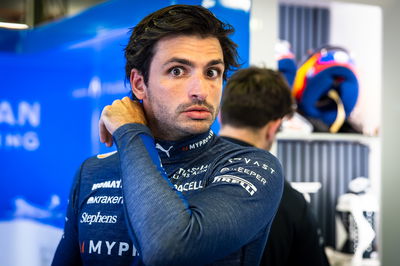Overtaking statistics reveal limited DRS appeal

Statistics have revealed that whilst the introduction of the 'artificial' Drag Reduction System (DRS) in F1 2011 has increased overtaking in the top flight, it has not done so to the extent perhaps perceived, with the return of Pirelli tyres ostensibly yielding a greater effect.
Research conducted by Mercedes Grand Prix has generated some figures to quantify what has been widely praised as one of the most exciting and action-packed F1 seasons in recent memory this year - and international television viewing numbers reflect that positive acclaim. The new rules are clearly having the desired effect.
At almost the midpoint of the 19-race campaign, there have already been 623 overtaking moves - excluding opening lap gains or position changes due to damage, but including battles between team-mates and faster cars lapping the bottom three teams (Team Lotus, Virgin and Hispania) - equating to an average of 69 per grand prix. To put that into perspective, there were 547 successful manoeuvres throughout the whole of 2010, and only 244 in 2009, prior to the arrival of the aforementioned frequently-lapped trio of newcomers.
However, just 29 per cent of the passes in 2011 have been the result of DRS - the remaining 71 per cent constituted by lapping instances, team-mate battles and non-DRS passes - and only in Shanghai, Istanbul, Barcelona and Valencia have DRS-assisted moves outnumbered normal moves. The highest number of DRS passes was seen in Turkey with 50; the fewest was in Monaco with just two, whilst Melbourne (five) and Silverstone (six) similarly benefitted little from the adjustable rear wing.
The most potent advert for DRS was undoubtedly Valencia, where 50 per cent of the overtakes were DRS-enabled; only 11 per cent were achieved without it.
Pirelli, however - and the Italian tyre-supplier's deliberately fast-wearing rubber - has played a more significant role in spicing up the F1 2011 spectacle. In Barcelona, for example, 69 per cent of successful passes were due to the driver being overtaken struggling on older tyres than his pursuer.
From all of the non artificially-aided passes, just over 55 per cent occurred when the difference in tyre age between the two cars was less than five laps, with 45 per cent when it was more than five laps. Of the 180 DRS moves, 52 per cent had tyre age difference of less than five laps, and 48 per cent more than five laps.
The race with the most passing moves was Montreal (136), followed by Istanbul (123) and Shanghai (97), whilst Monaco (22), Silverstone (29) and Melbourne (30) were conversely the most processional. In Valencia, there were 44 - twice as many as in Monaco.
There have been 560 pit-stops from the opening nine grands prix, including penalties. Istanbul witnessed the most at 82; Monaco the fewest with just 43.










